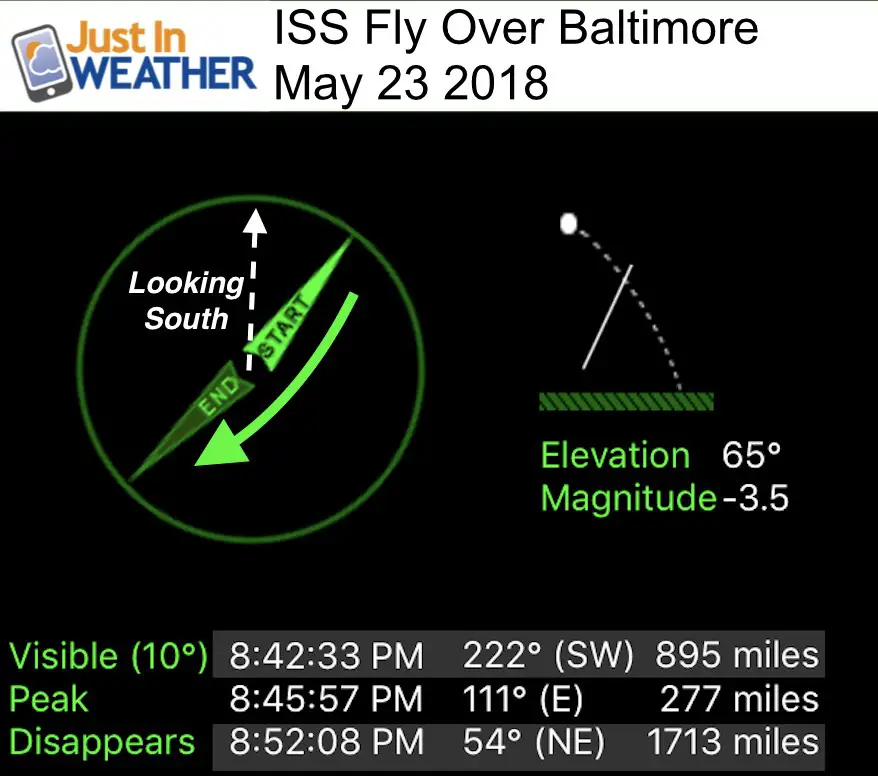 The International Space Station is in an orbit with a few passes over our region today. The most impressive one will be this evening as our sky will be dark, but the altitude of ISS will be high enough to still capture sunlight and appear to glow bright. The best viewing today, if the clouds clear, will be at 8:45 PM. Below you will see view tips, ISS trivia, Live streaming video from ISS, and a global tracking map.
The International Space Station is in an orbit with a few passes over our region today. The most impressive one will be this evening as our sky will be dark, but the altitude of ISS will be high enough to still capture sunlight and appear to glow bright. The best viewing today, if the clouds clear, will be at 8:45 PM. Below you will see view tips, ISS trivia, Live streaming video from ISS, and a global tracking map.
Viewing Tips
Our view of the ISS flyover will last about 5 minutes and peak at 8:45 PM. The track will start from the southwest sky, or to the left of due south. Or, look in the direction of the sunset and turn about halfway to your left.
ISS will pass almost directly overhead and then move off to the northeast. Due to the high altitude, ISS will be reflecting sunlight even though we will be in dusk below. It will make the Space Station appear like a fast moving plane with a very bight light, but no blinking lights.

ISS Trivia
You will be able to see it with your own eyes, but binoculars may helming you identify some of the solar panels and central structure. I don’t recommend a telescope since it will be moving pretty fast. Check out these stats:
- Orbital speed: 17,000 mph
- Complete Orbit = 92.65 minutes
- Orbits per day: 15.54
- Days in orbit: 17 years, 26 days
- Altitude: Ranges between 249 and 256 miles above the ground
Live View From ISS
Tracking Map
If the map does not appear, click for it here

Shine On
Proceeds from all sales go to Just In Power Kids. Click the image to shop and show your support.
Please share your thoughts, best weather pics/video, or just keep in touch via social media
-
Facebook: Justin Berk, Meteorologist
-
Twitter: @JustinWeather
-
Instagram: justinweather
Keep In Touch Every Day
Click here to sign up for email alerts…. Just in case you don’t get the post on your social media feed
 Get the award winning Kid Weather App I made with my oldest son and support our love for science, weather, and technology. Our 3 year anniversary of the release and our contribution to STEM education is this November. It has been downloaded in 60 countries, and works in both temperature scales. With your support we can expand on the fun introduction to science and real weather.
Get the award winning Kid Weather App I made with my oldest son and support our love for science, weather, and technology. Our 3 year anniversary of the release and our contribution to STEM education is this November. It has been downloaded in 60 countries, and works in both temperature scales. With your support we can expand on the fun introduction to science and real weather.

